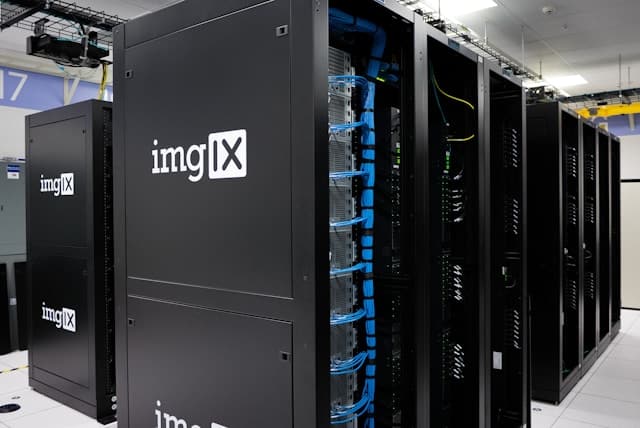When you ask your smartphone to set an alarm or ask a smart speaker to play your favorite song, they listen to your speech, understand it, and perform the action. But do you ever wonder how they interpret your spoken commands? The answer lies in speech recognition – an exciting technology that’s getting better every day, thanks to neural network models. This article will explore how these models enhance real-time speech-to-text accuracy – no matter if you are a tech guru or still figuring out how to use a smartphone.
The Basics of Speech Recognition
Before diving into the complexities of neural networks and deep learning, let’s start with the basics. How does speech recognition work?
A découvrir également : What Role Do Predictive Maintenance Models Play in Industrial IoT Efficiency?
Speech recognition, also known as automatic speech recognition (ASR), is a technology that converts spoken language into written text. It can be used for various applications, from transcription services and voice assistants to command-based systems in industries like healthcare and automotive.
The process starts with input. The speech recognition system captures the audio through a microphone and then goes through a series of processing stages. These include signal analysis for identifying sound patterns, feature extraction for distinguishing specific characters of the speech, and finally, recognition. At this stage, the system interprets the spoken words and turns them into text.
A lire aussi : How Can Generative AI Models Transform Content Creation in Digital Marketing?
However, the challenge lies in understanding the nuances of human language. Dialect, accent, speed, tone, background noise – there are countless factors that can affect how we speak and how our words are understood, even by advanced machines. This is where the power of neural network models come in.
The Role of Neural Network Models in Speech Recognition
So, how do neural networks fit into the picture of speech recognition? These models are an integral part of the recognition process. They essentially mimic the human brain’s neural networks, learning to understand and interpret inputs.
Neural networks consist of multiple layers, each capable of processing a particular part of the speech data. They begin with an input layer, which receives the audio data, followed by one or more hidden layers where the actual processing happens, and finally, the output layer provides the final transcription. The ‘deep’ in deep learning refers to these multiple layers in the neural network.
These models are especially adept at handling complex tasks, such as recognizing speech in noisy environments, adapting to different accents, and even understanding context to better interpret the speech.
Learning from Data: Training Neural Networks
But how do these neural networks get so smart? The answer lies in the training.
Just like you would learn a new language by practicing and learning from your mistakes, neural networks also learn from data. The more data they are fed, the better they become at recognition tasks. This method of learning is known as supervised learning, where the networks are trained on a large dataset of speech samples and corresponding transcriptions.
Every time a network makes a mistake in transcription, it adjusts its internal parameters – a bit like learning from its mistakes. Over time, and with enough data, the network becomes adept at understanding and transcribing speech, thereby enhancing the accuracy of speech-to-text conversions.
The Power of Deep Learning in Real-Time Speech Recognition
Deep learning takes neural networks a step further. By creating deeper (more layered) networks and using more sophisticated training techniques, deep learning models can achieve even greater speech recognition accuracy.
One of the most powerful aspects of these deep learning models is their ability to process and understand the temporal nature of speech. This means they consider the sequence and timing of the speech, something that’s crucial for accurate recognition.
For example, the phrase “time flies” means something different than “flies time.” Traditional models might struggle with such nuances, but deep learning models can understand these differences, thanks to their recurrent neural networks (RNNs). RNNs have a ‘memory’ of previous inputs, allowing for this understanding of sequence and context.
The Future is Now: High-Performance Speech Recognition
So where is all this leading us? As the models continue to learn and evolve, we’re seeing remarkable progress in real-time speech-to-text accuracy.
Neural network models and deep learning are transforming speech recognition, making it faster, more accurate, and more natural. They’re improving the performance of voice assistants, powering real-time transcription services, and enabling voice control in more devices and applications.
The integration of these models into our everyday technology is creating more seamless and intuitive user experiences. Whether it’s asking your smartphone for directions, dictating a message, or controlling your smart home devices purely with your voice, accurate real-time speech recognition is already a part of our lives and it’s getting better every day.
So, the next time you ask your voice assistant something, remember – you’re interacting with an incredibly advanced neural network model that’s continually learning, evolving, and improving its understanding of human speech.
The Intersection of Neural Networks and Real-Time Speech-to-Text
The fusion of neural networks and real-time speech-to-text technology is revolutionizing our interactions with devices. This advancement is a result of continuous research and improvements in machine learning, deep learning, and automatic speech recognition technology.
Neural networks, especially the deep learning models, are designed to mimic the workings of the human brain. With their multi-layered structure, they can process and understand the complexities of human speech, including the sequence, rhythm, and even the context of words spoken.
One of the most impressive aspects of deep learning models is their ability to understand the temporal nature of speech, which essentially means they can comprehend the sequence and timing of words spoken. Convolutional neural networks (CNNs) and recurrent neural networks (RNNs) are particularly adept at this. RNNs, for instance, have a ‘memory’ function that enables them to remember previous inputs, making it possible for them to understand sequence and context in speech.
The ability of these networks to process speech in real-time has direct implications for automatic speech recognition technology. Real-time speech-to-text accuracy is a critical aspect of several applications, from voice-activated assistants to real-time transcription services. It’s what makes it possible for you to ask your smart speaker to play a song, dictate a message on your smartphone, or interact with voice-controlled appliances in your home.
As the models are trained on more and more data, they continually improve their recognition capabilities, resulting in higher accuracy levels. The error rate for speech recognition technology has steadily been declining, thanks to the contribution of neural networks and deep learning models.
Conclusion: Enhancing Communication with AI
In a nutshell, the use of neural network models in speech-to-text technology is paving the way for more intuitive and efficient communication with machines. These models have significantly improved the accuracy of real-time speech recognition, making it possible for us to interact with devices seamlessly.
Through machine learning and deep learning models, our devices are not just transcribing our words but truly understanding our speech. The state of the art language model of these systems continues to evolve, reducing the error rate in transcriptions and enhancing the overall user experience.
Researchers, engineers, and tech enthusiasts can access a plethora of studies on this topic via resources such as Google Scholar. The continued study and improvement of these models hold the promise of even more accurate and versatile speech recognition technology in the future.
Today, we are not just talking at our devices – we are talking with them. With these advancements, we can expect to see an even more prominent integration of voice-activated technology in our daily lives in the future. From personal use to business applications, the possibilities for real-time, accurate speech-to-text technology are vast and exciting.
In conclusion, the development and application of neural network models have truly revolutionized speech recognition technology. The future is here, and it’s verbally activated.






